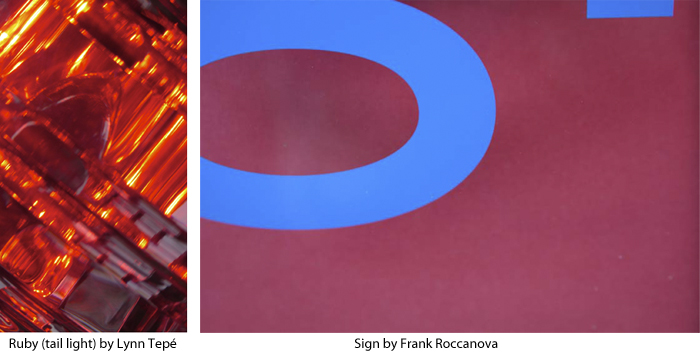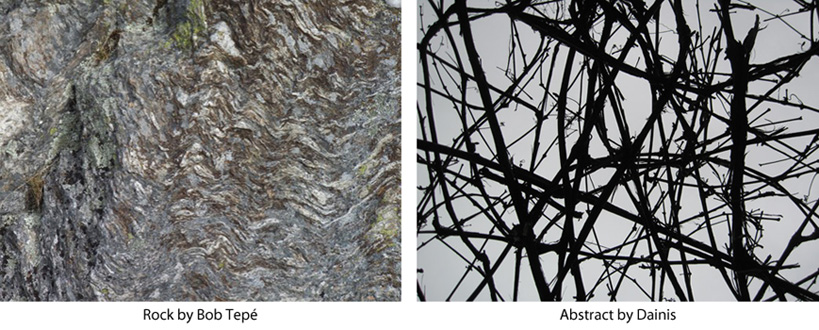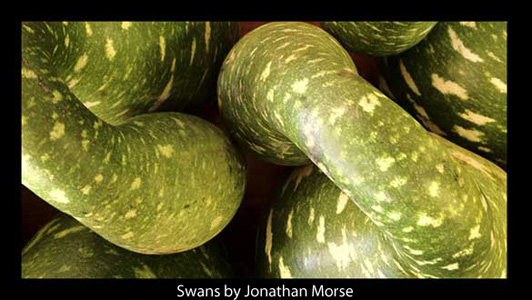Hello All,
We had a very good meeting yesterday, and a lot was accomplished.
Nine people brought in work in response to the assignment which was to make an abstract photo, as an exercise in sharpening one’s visual sense, and exploring those elements of a photograph that exist outside the presentation of realistic content. This proved to be a bit more difficult than one had imagined.
A lively discussion ensued, and Frank Roccanova introduced a novel concept to distinguish between two types of abstract photos:
1. Good
2. No good.
Frank went on to explain that it seemed to him that “good” abstract photos where those in which one could not identify the objects in the photo, while No Good abstracts were those where the elements could be easily identified. This astute observation served to underline the power of photographs to portray reality and the difficulty of making “good” abstracts by Franks definition.
None the less, there were many “good” ones, here are just a few examples.


Most of the photos were close ups of well known objects, which were removed from the normal context which would have made the elements of the photo easier to identify.
However, Bruce Milne showed a photo that took the opposite approach. His shot was a telephoto of an icy river landscape that covered several hundred yards: the abstract quallity came from the fact that the elements were so small that they could not be recognized.
Everyone agreed that this was a very useful exercise, and so it was decided to continue this assignment for the January meeting.
It would be great if those who have not yet shot an abstract will do so, and those who have already done so successfully will also make a new contribution, perhaps further inspired by the evening’s discussion and presentations. The important thing in this exercise is to create the abstract quality while taking the picture, and not in Photoshop, as it is really an exercise in “seeing”.
– Jonathan Morse

